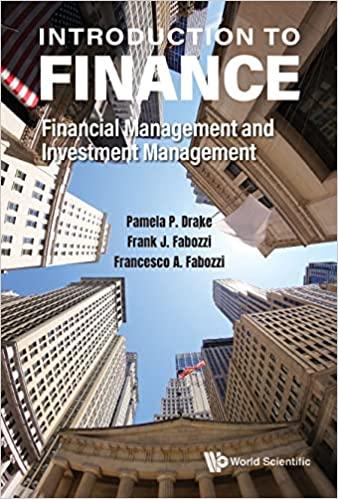Answered step by step
Verified Expert Solution
Question
1 Approved Answer
Case 42 provides detailed description of the DCF approach of enterprise valuation, and reviews other methods of valuation. Study Case 42 in its entirety and



















Case 42 provides detailed description of the DCF approach of enterprise valuation, and reviews other methods of valuation. Study Case 42 in its entirety and discuss the following questions:
1. Describe DCF valuation in your own words.
2. There are 3 key factors in DCF valuation: FCF, Terminal cash flow, and WACC. Please provide definition and formula explanation for all 3 factors.
3. Distinguish between stand-alone cash flows and merger cash flows. When should merger cash flows be used in valuation?
4. Compare Table 1 and Table 3, what are the assumptions used in preparing Table 1 and Table 3 respectively?
5. What are some market multiples commonly used in determine terminal value?
Step by Step Solution
There are 3 Steps involved in it
Step: 1

Get Instant Access to Expert-Tailored Solutions
See step-by-step solutions with expert insights and AI powered tools for academic success
Step: 2

Step: 3

Ace Your Homework with AI
Get the answers you need in no time with our AI-driven, step-by-step assistance
Get Started


